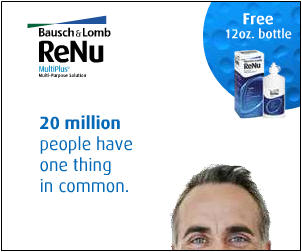With all the recent noise about new online communication tools such as user-generated content and pushing content through RSS, we shouldn’t forget that some tried-and-true tactics aren’t going away any time soon. Take the the opt-in newsletter, particularly one that is customized to a recipient’s specific interests and tastes.
I challenge you to name an online tactic as powerful as a well-done opt-in email newsletter to draw visitors back to a web site or drive sales across a company’s complementary product offerings. This technique truly has legs.
Sure, it’s easy to see where email newsletters work in categories such as online fashion apparel and leisure travel. After all, is there anyone who hasn’t opted-in at one time or another to a travel site’s “hot deals” email?
But a truly enduring marketing tactic has the ability to surprise us – to show up and shine where we’re least expecting it. The email newsletter certainly has done this for me.
To my knowledge, one of the most effective opt-in newsletters around is in a category of services that no one ever wants to use. That category is healthcare.
Private Health News provides private labeled emails that a hospital or other care provider can use as a way to deliver news about its own offerings. What makes this newsletter so effective is the the fact that consumers truly appreciate receiving it. That’s due to theses two factors:
- The content is customized
- The content is trustworthy
Consumers sign up for it by visiting the site of the provider (let’s say it’s “General Hospital”), and then selecting topics of interest. This customization makes the newsletter unique to each households’ needs, with a selection of over 25 health topics from Blood Pressure to Breast Cancer, Sleep Disorders to Stroke Rehabilitation.
When the newsletter arrives, it reports the latest research, originally seen in articles from over 350 prestigious healthcare publications. The publications include the Journal of the American Medical Association and Lancet. Interspersed with the news — which, mind you, is tailored exactly to a recipient’s current health concerns and interests — are brief bulletins and ads about General Hospital events and offerings relevant to that topic.
For instance, along with a Men’s Health article there might be a notice of a free prostate cancer screening held at the hospital in three weeks, along with a link to the place on the General Hospital site where you can sign up or get more information.
I first met Dan Ansel, the president of Private Health News, six years ago at a healthcare marketing conference in San Diego. When he described his fledgling product to me, I immediately saw how this was the part of the puzzle I was struggling to deliver to my healthcare clients.
Dan’s product was a way to ensure that the valuable minority of consumers who visit my clients’ sites – and care enough about their families’ health to be proactive – can receive, every month, several excellent reasons to come back for more information. In other words, it was a way to retain prospects and patients, and to cross-sell to them wherever appropriate.
Has it worked? My experience and those of my clients says it has. What’s more, Dan has made sure to periodically survey newsletter readers, to get the user’s perspective on its effectiveness. Here are a few of the results of his latest survey, which had a sample size of 10,157 newsletter subscribers:
- 99% consider the health information in their newsletter valuable, with 25% saying it was “very valuable”
- 75.6% have the health issues to which they subscribe or are making decisions for loved ones with those health issues
- Respondents are making healthcare decisions for an average of 3.3 people
- 67% indicate a new awareness of the provider’s services as a result of receiving their newsletter
- Over 13% have used these services because of that awareness
That last metric is the one that always blows me away. Every time the survey is conducted, more that one out of every ten people surveyed said they used a hospital’s services because of awareness they gleaned from the newsletter.
If only half of those people are telling the truth, that means over 600 individuals in this relatively small sample went to the provider of the newsletter for a possibly very profitable high ticket item, all thanks to an email newsletter.
I’ll be returning to the wonderful marketing double whammy of customization and credibility in future examples of online marketing excellence. But I’m not sure any other online technique I’ve encountered has the same high level of ROI as this surprising opt-in newsletter that sells people services they would prefer to never think about getting in the first place.
